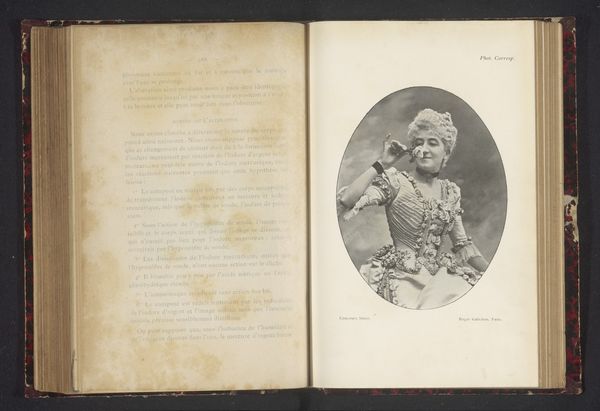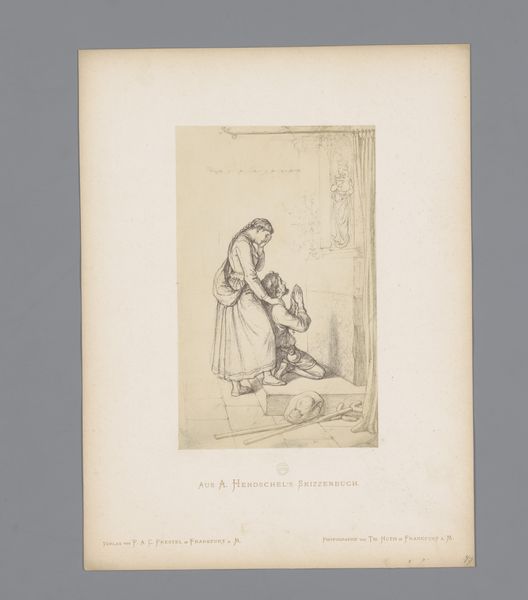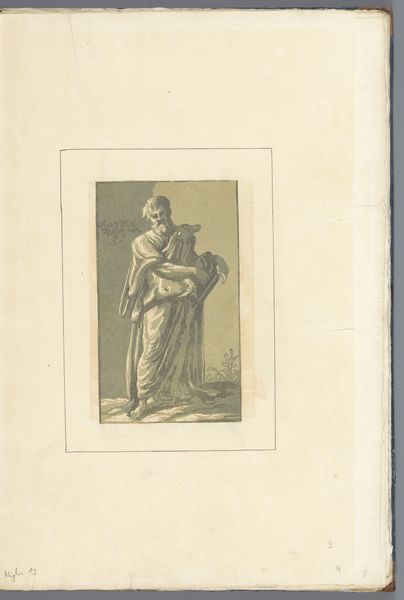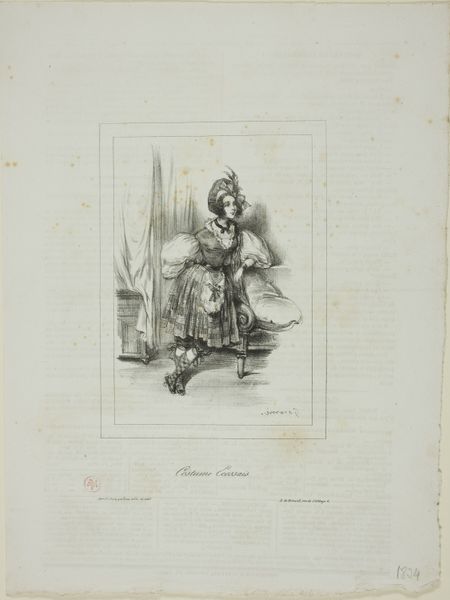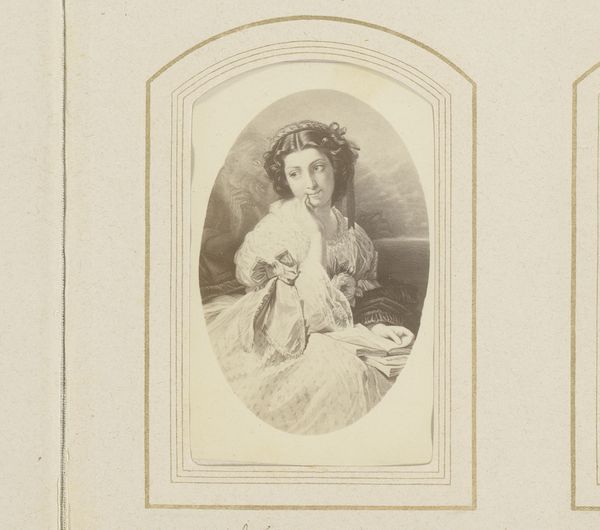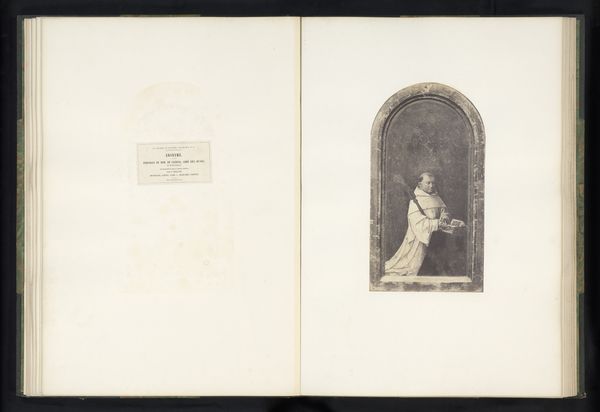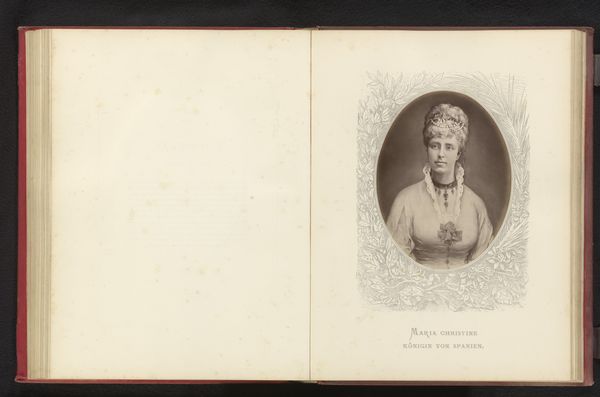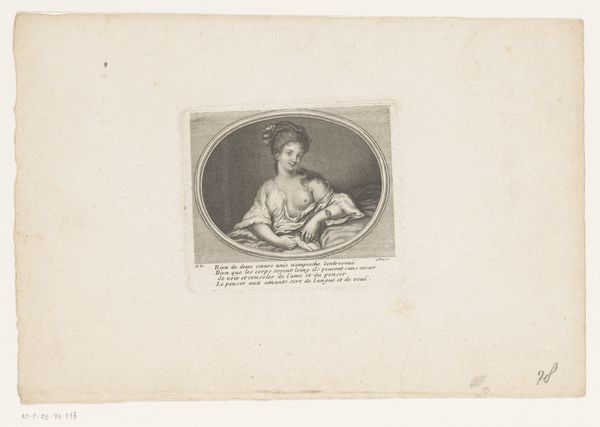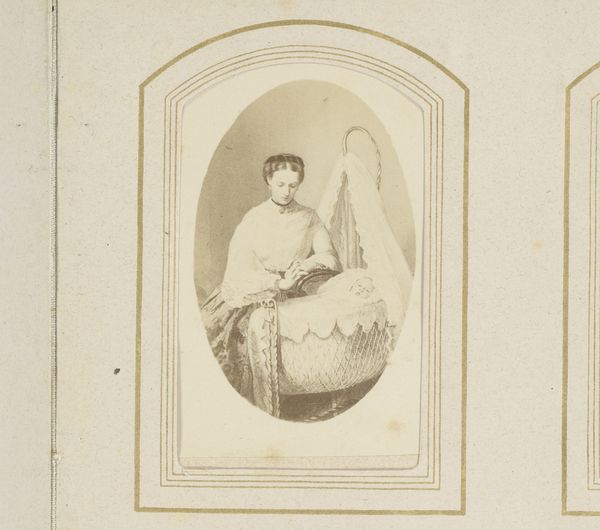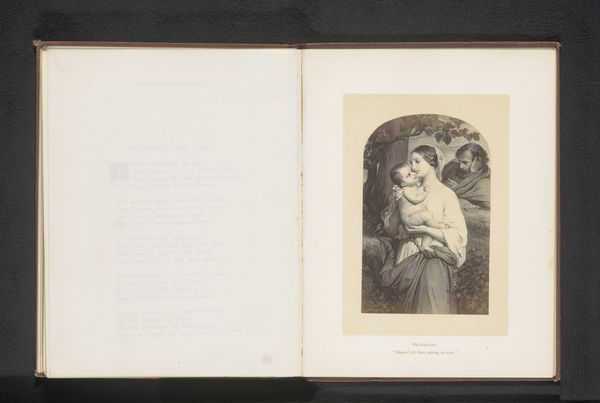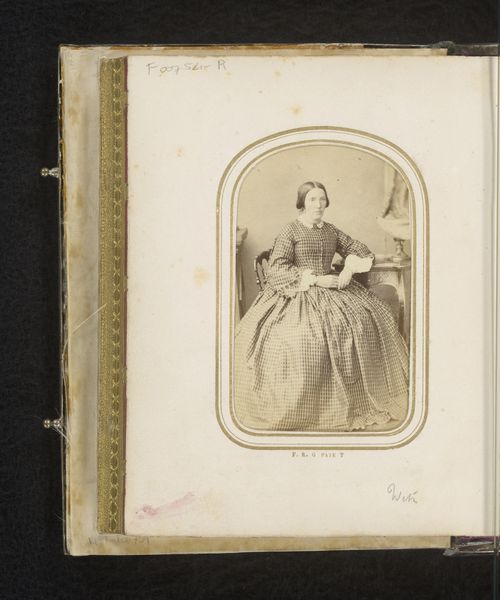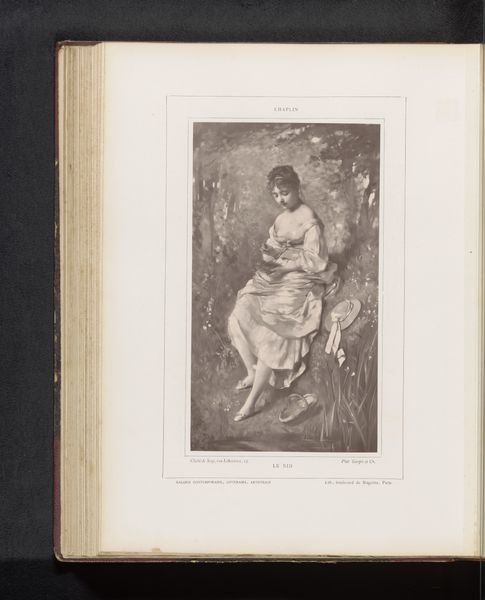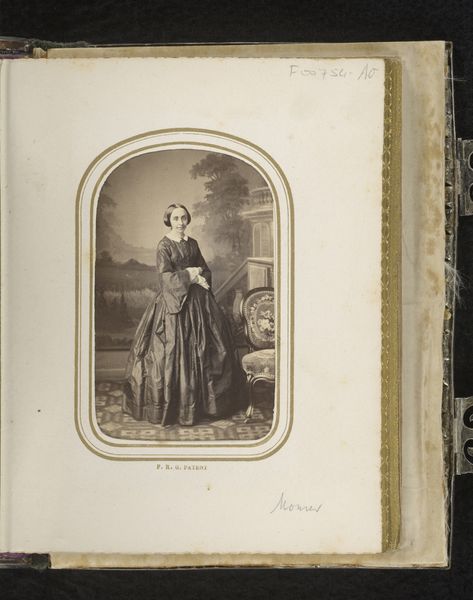
drawing, paper
#
portrait
#
drawing
#
paper
#
pre-raphaelites
#
realism
Dimensions: height 225 mm, width 165 mm
Copyright: Rijks Museum: Open Domain
Curator: Before us, we have a portrait drawing titled "Beatrice of the field of the alder-trees" created before 1885 by Frederick Hollyer. It's rendered on paper, showcasing a style that intertwines realism with Pre-Raphaelite sensibilities. Editor: Gosh, she looks like she’s seen some things, hasn’t she? The gentle shading around her eyes gives this impression of untold stories lurking beneath the surface, a bit like peering into the past. Curator: Precisely. The artist’s skill in manipulating light and shadow helps to enhance this impression. Observe how the subtle gradations define her facial contours within the oval frame, directing focus to her composed expression. Editor: And there's this beautiful fluidity in the way her dress flows and folds. I feel like you could almost hear the rustle of the cloth. Curator: Yes, note how her garb seems to be merely suggested, almost vaporous in its construction. The treatment of the fabric shifts emphasis to her neck and face as a locus of attention and calm self-possession. It draws from realism while it filters affect. Editor: She feels trapped, though— like an echo in a silent chamber, framed by emptiness. It makes me wonder about the artist’s frame of mind at that moment; melancholy, perhaps? Curator: I understand how you read into it that way, yet the use of form is very clear in establishing not a tragic mood but one of subtle determination. Editor: But you’re not at all swayed by the tilt of her head, that shadow beneath her jaw? I think this artwork tells a tale of untold struggle… Curator: I find it reveals Hollyer's technique in crafting both volume and emotional depth—balancing details in her face with an intentional diffusion across the whole scene. Editor: I leave here now with many of the same questions I had when I arrived. What was Beatrice thinking in that far away space, long gone. Curator: It’s a drawing where artistry merges into questions of reality—it gives pause to our critical insight of the artwork’s qualities.
Comments
No comments
Be the first to comment and join the conversation on the ultimate creative platform.
